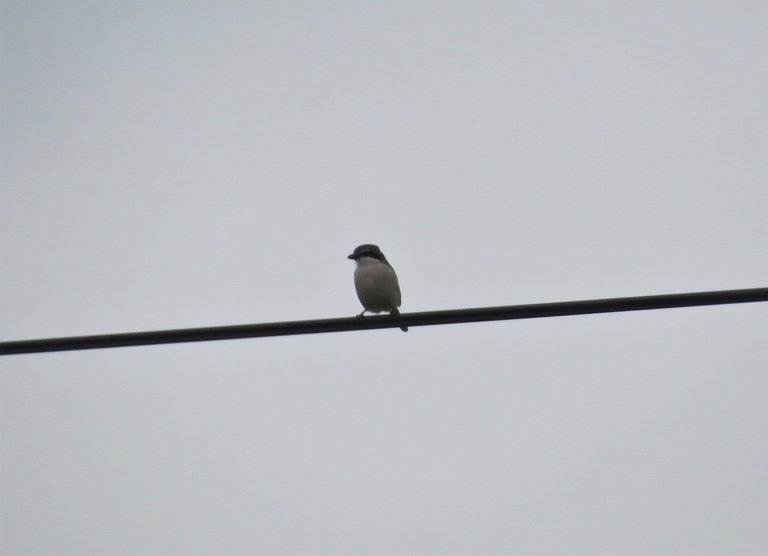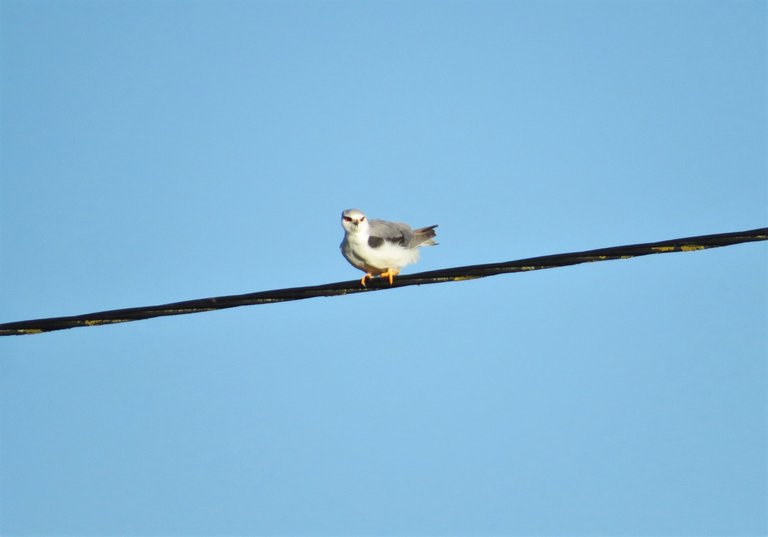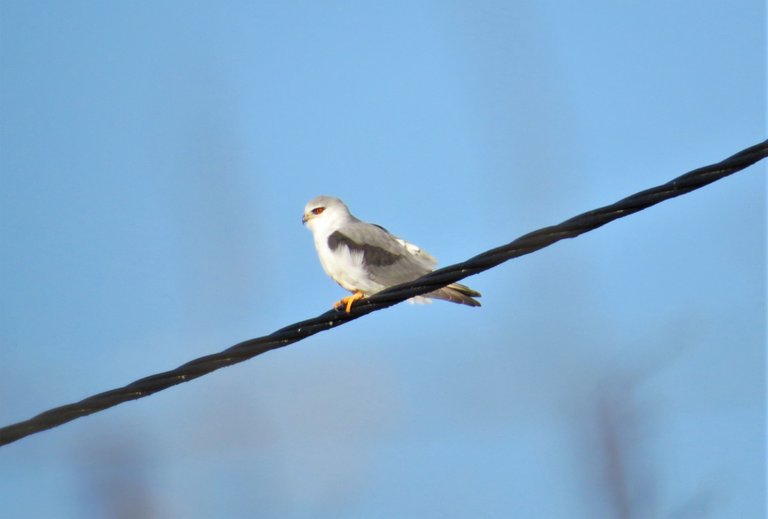Hanging on a wire
Well, the correct term for this post would be Perching instead of Hanging. But it's close enough! 😁 Off to this week's SMAP, being the theme Birds on Wire; you can check the original contest post here!
Going on a full portuguese species post this time, but starting far away from the mainland, in the Açores islands.

In the beautiful Pico island, common sterlings were a frequent sighting; sometimes one individual on a wire with a mean look, sometimes a couple; and sometimes a whole bunch of them! But staying on the theme, here's more of the perched ones.

Despite their name, this is not the usual sterlings I see; and it was the first time that I've seen them with such a spotted plummage. In mainland Portugal, spotless sterlings are a lot more common, at least for me.

And this is how I normally see them: by the dozens, on the electric wires! In these last years, them seem to be more and more common in urban areas too. I rarely saw them near my home, and now it's very very frequent to see or hear them; they're a noisy bunch, they don't usually go unnoticed!
Less noisy than sterlings, but also normally found on wires? Well, here you go!

These are probably the portuguese swallows with the most striking colour; despite the mostly black and white plummage, they have beautiful reddish colours too. Not only in the head, but also in the rump; unfortunately couldn't get them facing the other way!

Other species very commmonly seen on wires and very easy to recognize are these little guys.

Little bird, on top of a bush or wire, in an open position, with black head and orange chest? 99,9% chance of being a male stonechat! This one was taken in the fields of Alentejo, away from the main urban areas, but you can easily see them there as well. Unlike the shrike, that I was only able to see in rural areas.

These shrikes are a subspecies of the grey shrikes, endemic to the Iberian Peninsule (POrtugal and Spain).
Left the coolest ones to the end. Birds of prey are normally seen flying, but sometimes we get lucky and can catch them standing still!

Kestrels are the most common hawks here in Portugal. This one is a male, easily distinguished from females by their grey head. I know, technically he's not on a wire... but he's cool, there are wires in the photo, and this is my blog, so I say it works too! :P
Even better than finding a kestrel perched.... was being able to photograph another bird of prey perching, on the same birdwatching session!

These kites are only seen in very specific areas of the country! Luckily for me, this area was one of them. They are beautiful, with their white, grey and black plummage, and with their red eyes!

Too bad I couldn't get closer for clearer photos, but just being able to see them standing still was already a blessing!
Have a great week everyone!


Still haven't joined Splinterlands? In what planet do you live in? Click the banner below and join the fun! (It has my referral link; you can go directly to the website if you don't want to use it; either way... join in! 😎 )

Your content has been voted as a part of Encouragement program. Keep up the good work!
Use Ecency daily to boost your growth on platform!
Support Ecency
Vote for new Proposal
Delegate HP and earn more
Love the scary red eyes on the kite. Seems like a lot of overlap with Portugal and where I used to live in California. Kestrals, Kites, Swallows, Sterlings, with some differences in the local species. Nice post Pardinus even if you took some liberties with "on a wire" and didn't get a good rump shot haha
It's amazing to see how same species appear so far apart in the world. And in some cases, altough the species are different, the similarities are striking, so you can easy recognize a specific family or genus. Thanks for the visit! !BEER
Here's some love for the beer !LUV not you haha
@steven-patrick(1/1) gave you LUV. H-E tools | discord | community | <><
H-E tools | discord | community | <><
HiveBuzz.me NFT for Peace
View or trade
BEER.Hey @steven-patrick, here is a little bit of
BEERfrom @pardinus for you. Enjoy it!Learn how to earn FREE BEER each day by staking your
BEER.Very clear photos of good looking birds. Bravo!
Thanks mate! Cheers! !BEER
View or trade
BEER.Hey @crazy-andy, here is a little bit of
BEERfrom @pardinus for you. Enjoy it!Do you want to win SOME BEER together with your friends and draw the
BEERKING.Starling are noisy, but I love to hear them singing. They have big repertoire and mislead me sometimes for something else, 😀
Wonderful selection of photos. The birds of prey are awesome. Well spotted!
Sometimes too big of a repertory, yes! :) Thank you! !LUV
Amazing focus, and detailed one! Congratulation once again!
Thanks mate! !LUV
@pardinus(1/1) gave you LUV. wallet | market | tools | discord | community | <><
wallet | market | tools | discord | community | <><
Im so so impressive with your article from the tỉle to the pics and content. Thank for OCD's post, I have know you here ^_^. Keep it up. Cheers!
Thanks a ton for the feedback and for the visit! Cheers! !BEER
View or trade
BEER.Hey @tuocchu, here is a little bit of
BEERfrom @pardinus for you. Enjoy it!Learn how to earn FREE BEER each day by staking your
BEER.Cheer, Beer! I love drinking BEER xD. Thank youuuuu ^^